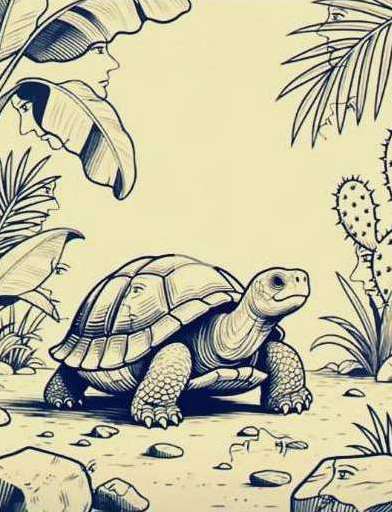The Enigmatic Faces in the Woods: An Exploration of Optical Illusions
Have you ever looked at a cloud and seen a dragon, only for someone else to see a fluffy bunny? This seemingly simple discrepancy speaks volumes about the fascinating world of optical illusions and how our brains interpret visual information. Let’s delve into this intriguing phenomenon, using a captivating image as our guide.
The Mechanics of Deception: How Our Brains Play Tricks on Us
Our eyes are constantly in motion, flitting across scenes in rapid, almost imperceptible movements. These tiny shifts allow us to gather snippets of visual data, which our brain then seamlessly stitches together to create a coherent image of the world. This incredible process is incredibly efficient, but it’s not foolproof. Our brains rely heavily on prior experiences and learned patterns, using these familiar frameworks to interpret new visual information. This pre-existing knowledge, while usually beneficial, can also lead to misinterpretations and the creation of illusions.
Unmasking the Forest Faces: A 20-Second Challenge
Prepare to test your perceptual abilities! The image below isn’t your typical woodland scene. A complex network of intertwined branches conceals a surprising number of human faces. Set your timer for 20 seconds and see how many you can uncover. Are you ready? (Insert image here)
Beyond the Branches: The Psychology of Perception
The ability to spot these hidden faces speaks to the remarkable plasticity of our visual processing. What one person perceives instantly, another might miss entirely. This variability stems from individual differences in experience, attention levels, and even personality traits. The same image can evoke wildly different interpretations, highlighting the subjective nature of perception.
Why Do We See Faces Everywhere? (Pareidolia)
This tendency to perceive faces in inanimate objects – known as pareidolia – is a common phenomenon. From the Man in the Moon to seemingly human features in toasters, our brains seem predisposed to identify facial patterns. This evolutionary trait likely stems from the vital importance of recognizing faces in our social interactions, with its survival implications for early humans. The quicker and more accurately we could identify another person, the quicker we can determine if they represented friend or foe, safety or danger.
The Takeaway: The Illusion of Certainty
Optical illusions remind us that what we see is not always what is. Our brains actively construct our reality, filtering and interpreting sensory data through a lens shaped by personal experience and ingrained patterns. Next time you encounter an unusual image, take a moment to appreciate the complex interplay between perception and reality, the brain’s ability to fool itself, and the remarkable power of visual interpretation. So, how many faces did you find? Let us know in the comments below!




